
|   |

|   |
Rasa Ranjini Dance Festival and Sanchari - Vijay Shanker e-mail: vijaydance@gmail.com March 28, 2024 RASA RANJINI DANCE FESTIVAL Debnrutyam Studio (Bangalore) headed by Odissi exponent Guru Debasish Pattnaik organised Rasa Ranjini dance festival, incorporating the colourful and magnificent Lord Krishna in different classical dance styles of Odissi, Mohiniattam, Kuchipudi and Kathak at the Stein auditorium of Habitat Centre in New Delhi on 30th January. It was interesting to witness how each dancer related to the eternal and magical flute player in their own styles. 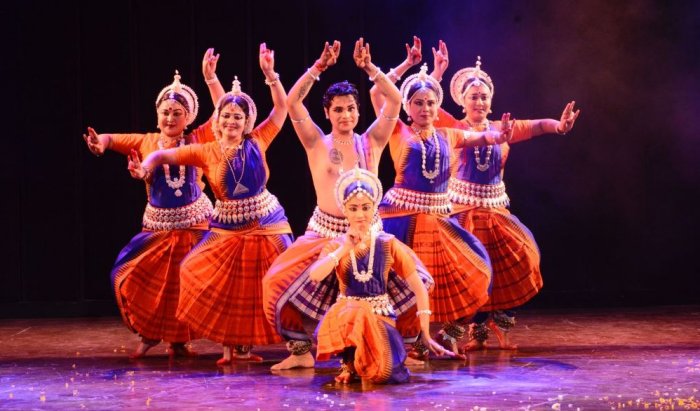 Debasish Pattnaik & group The programme commenced with a brief salutation to Lord Ganesha in "Gaja Vadana" (Odia composition) in the Odissi style by Debasish Pattnaik and his talented team of dancers, followed with absorbing and elegant Mohiniattam performance by Dr Rekha Raju, disciple of Kalamandalam Usha Datar, who performed a beautiful composition of Naryana Teerta that vividly described the dramatic encounter of Lord Krishna with his childhood friend Sudama. Rekha succeeded in interpreting the restlessness and inhibitions of frail and worried Sudama as he feels completely embarrassed when Krishna embraces him profoundly and asks him what he has brought to give his friend. With reluctance, Sudama offers the cloth packed with beaten rice, striking an emotional chord with the audience (rasa anubhuti). Rekha performed another number in Malayalam "Oru nerath kanath" that portrays the exciting encounter of the bhakta with Lord Guruvayurappan. Rekha Raju is a fine performer with command over movements and abhinaya as well. A Bismillah Khan awardee, Rekha is the artistic director of NrithyaDhama Temple of Fine Arts in Bangalore. With the choreography by Guru Durga Charan Ranbir, Debasish along with five senior disciples performed Krishna Ashtakam that elaborately described the varied episodes in the life of Lord Krishna, pertaining to his birth, childhood pranks, dalliance with gopis and ultimately the Viswaroopa darshanam and the battle at Kurukshetra. Debasish danced with so much elegance, poise and dexterity that keep you spellbound. Incidentally, Debasish has recently won the Bismillah Khan Yuva Puraskar for his devotion towards the exquisite classical dance of Odissi. 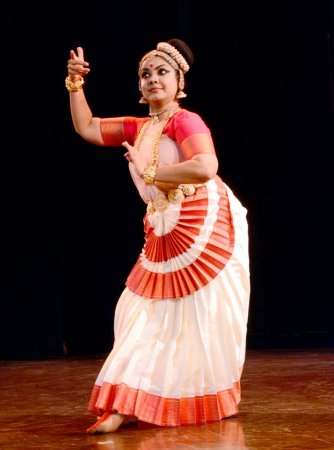 Rekha Raju  Vrinda Chadha 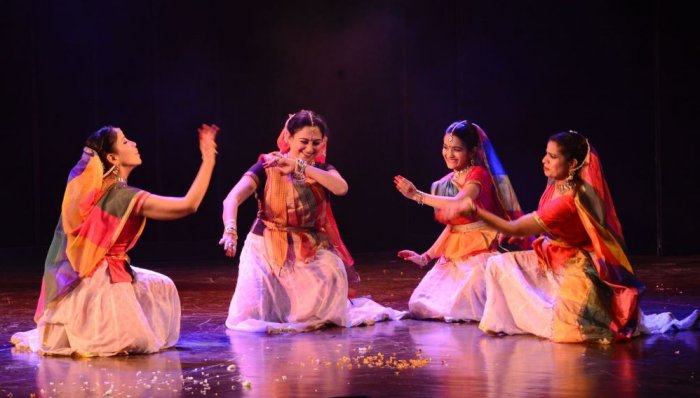 Moumala Nayak & group Moumala Nayak, disciple of Pt Birju Maharaj, and an accomplished Kathak exponent, commenced her performance with an unusual vandana in praise of Lord Hanuman "Jayeti Jayati Mahavira" with four disciples, followed with the dance of joy and merriment "Naach rahi Radha" and concluded with the naughty Krishna in "Chala jawo hato." Moumala danced with comfortable ease and precision, revealing her command over technique and expressions. It was refreshing to watch the brilliant Kuchipudi exponent, T Reddi Lakshmi, disciple of Guru Jayarama Rao, perform the Krishna Leela Tarangini along with Vaishnavi, Sangeeta and Balakrishna, In the depiction of various episodes in the life of Lord Krishna, inclusive of Kaliya Mardana, Vaishnavi as Kaliya performed in sync with Lakshmi, revealing the tussle between the serpent Kaliya and Lord Krishna. It was well enacted and performed.  Reddi Lakshmi & group 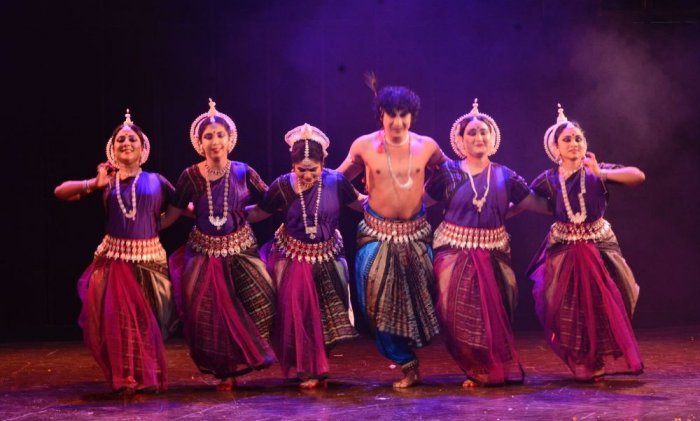 Patita Pavan Kala Niketan Besides the brief performance by the disciples of Guru Geeta Mahalik, the programme concluded with the group show of Patita Pavan Kala Niketan featuring Kevin D'souza and other dancers. The performance was quite impressive as the male dancers along with female counterparts did justice to the dramatic presentation. On the whole it was an interesting festival. SANCHARI - EXPLORING EXPRESSIONAL DANCE Kalapi Centre of Performing Arts (Mumbai) presented an unusual program titled 'Sanchari' to explore the significance and importance of expressional dance with relation to Rasa (emotion). The programme was held at the Natanam Studio of Performing Arts in Goregaon in Mumbai on 21st January and featured veteran performers like Sunayana Hazarilal, Mandakini Trivedi and duet by Jayashree Rajagopalan and Aishwarya Harish and the styles exhibited were Kathak, Mohiniattam and Bharata Nrityam respectively. Kathak exponent Keka Sinha heads the Kalapi Centre and remarked, "The name Kalapi is synonymous to peacock in Sanskrit. My parents had named me Keka, the call of the peacock, unaware of the fact that I was born to dance. Peacock gives us the joy of witnessing a visual art of beauty and dance. Hence the name Kalapi. The objective is to impart joy and happiness by presenting our rich cultural heritage of Indian classical dance. Although my group and I have been performing at several festivals for many years, we named it Kalapi only in Dec 2015. My disciples are not just my students, we are a family sharing deep bonds of heart. Their parents are the founding members of Kalapi. Kalapi Centre also holds 'Aabhaar', gratitude to the mentor festival in loving memory of Guru Reba Vidyarthi." Performing techniques in the Indian performing arts are to create a powerful aesthetic mood or Rasa. The device of 'sanchari' is no exception to this approach. It too is a medium to manifest the deeper, emotional, esoteric and symbolic meaning and implications of a poem or sahityam (literature). The concept of Rasa, being derived from Ayurveda, works on the principle that a substance, if rubbed and churned produces heat, enhances value and releases hidden properties or tatvam. Thus the one drop (bindu) of sthaayi bhava (permanent mood) is churned and approached in different ways with the help of the vibhavas (determinants), anubhavas (consequents) and vyabhichari bhavas (transitory, minor moods) to create Rasa of aesthetic mood in the spectator, which is also described as rasa anubhuti or rasa uttpati. In other words, the dancer or the actor has the ability to take the audience to a different level of consciousness or experience which takes you closer to the divine. The concept of the sanchari in dance choreography resonates with the concept of vyabhichari bhavas and like it, helps the meaning and mood of a literary text to intensify, swell and weave around the drop of rasa that is of supreme importance to the sangeeta traya. Abhida, lakshana and dhvani in literature, pallavi, anupallavi and charanam in music and padartha abhinaya, vinyasa and sanchari in dance choreography, are all parallel journey of the respective arts of sangeeta traya, to reach Rasa. In the introductory speech by Keka Sinha, she specified that according to the Natya Sastra, there are 8 sthayi bhavas and 33 sanchari bhavas, hence for instance if Karuna Rasa was to be created, it would not look nice if the heroine is seen weeping consistently, as there are other inter related factors that makes her sad, hence the sanchari and vyabhichari bhavas has to be exposed in order to reach and focus on the sthayi bhava. 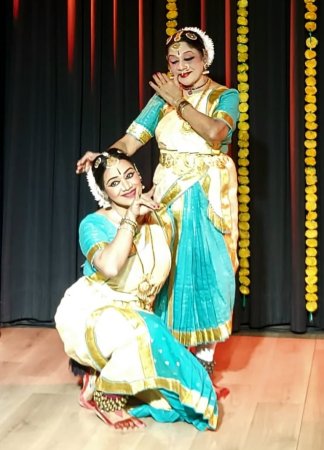 Jayashree Rajagopalan and Aishwarya Harish The first performer of the evening was Dr Jayashree Rajagopalan and Aishwarya Harish. Incorporating the technical aspects of Bharata Nrityam with the inclusion of charis and karanas, the mother daughter duo demonstrated the concise version of the Varnam with relation to Krishna who is also known as Gopala (cowherd), depicting the tussle with Krishna and the serpent Kaliya and the Vamana Avatara wherein the little dwarf captures the earth and the heaven and places his third footstep on the head of the king. In another item the captivating and the enterprising duo enacted the sequence when Surpanaka's nose is cut off by Lakshmana and Ravana takes revenge. The second performer of the evening was Dr Mandakini Trivedi who explained how in order to enhance and focus on sthayi bhava, other bhavas like sanchari and vyabhichari are important to delve deep and to create the Rasa with intensity. Narrowing down to Mohiniattam, she explained how it is influenced by the choreographic traditions of both the narrative Bharatanatyam and the theatrical Kathakali styles and demonstrated it by an excerpt from the Ramayana that followed the Bharatanatyam paddhati and a manodharma derived from Koodiyattam, that dramatized the jealous anger of Parvati on seeing Ganga on Shiva's head from a choreography from Ganga Tatvam. Similar to a Ninda Stuti, it was not easy for Lord Shiva to dissuade Parvati as she consistently was questioning about Ganga. Evolving and working on different thematic choreography, Mandakini has established herself as a distinct performer and mentor. 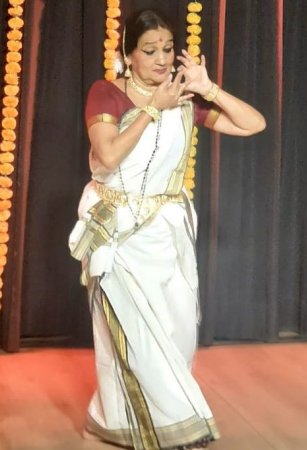 Mandakini Trivedi  Sunayana Hazarilal The senior most performer of the evening was Guru Sunayana Hazarilal who said, "My Guruji used to tell me that whatever your learn from the Sastras, just lock it up and keep it in the cupboard and what matters most is your experience as a performer and your ability to innovate and improvise on stage whenever necessary." She performed with dexterity and poise, creating a great impression as a devoted performer. Sunayana enacted the Surpanaka episode and another expressional number "Lashkar may jane na doongi" wherein the lady is reluctant to leave her husband as she fears he may not return but feels that it is his duty to face the battle. Sunayana Hazarilal is bestowed with the prestigious fellowship from the Sangeet Natak Akademi for her outstanding and invaluable contribution to the enrichment and propagation of the Kathak dance style. 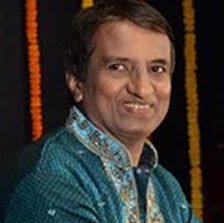 Vijay Shankar is a Kuchipudi and Kathakali exponent, teacher, bilingual journalist, arts critic and actor. |